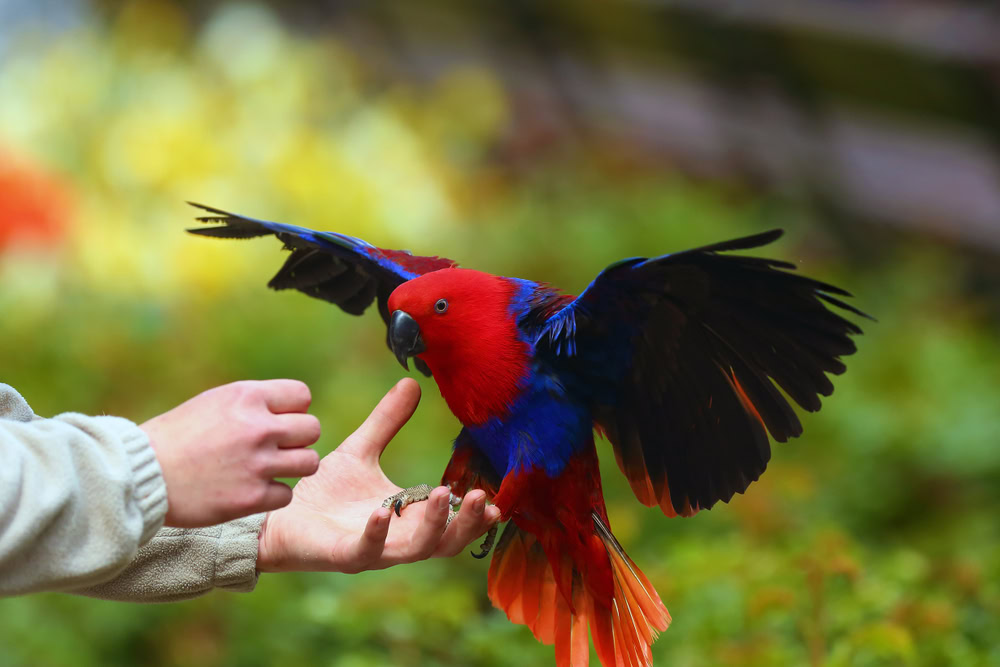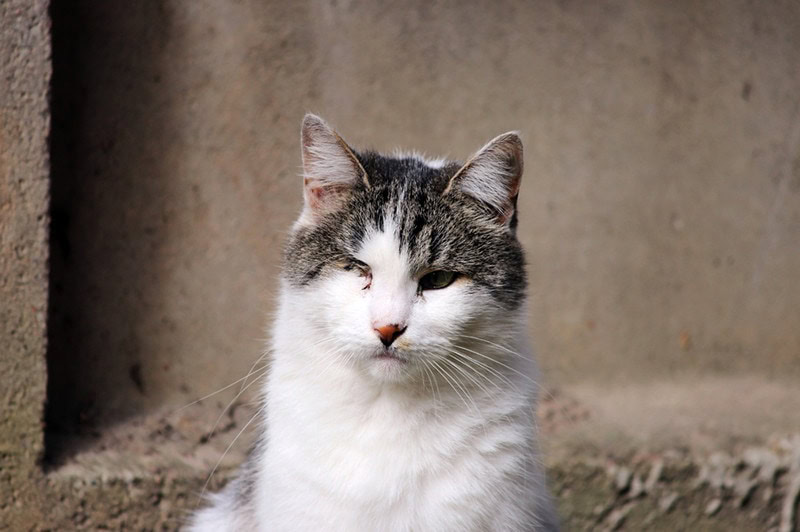VET APPROVED

The information is current and up-to-date in accordance with the latest veterinarian research.
Learn more »Click to Skip Ahead
When we think about birds, the first thing that comes to mind is usually flight. Except for the forty or so flightless birds in the world, flying is what birds have evolved to do. Their hollow bones, aerodynamic bodies, and streamlined feathers and wings allow them to defy gravity in ways that Elphaba could only dream of. With this in mind, we have to ask ourselves if clipping their wings—both literally and figuratively—and keeping them caged is unfair, or even cruel.
Birds are magnificent to watch, and many can make wonderful companions. However, unlike cats and dogs, who have evolved over several millennia from wolves and wildcats into the cuddly animals we know and love, birds have not undergone the process of domestication. The winged creatures we keep as pets are essentially captive or tamed versions of their wild counterparts, which means that their natural instincts are to fly free, not cozy up to humans. Does this mean that we shouldn’t keep birds as pets at all? Is there a way to keep a bird as a pet while still allowing them to stretch their wings and take flight?
The answer is yes, pet birds can be trained to live without a cage and not fly away—but only certain species, under certain conditions. Read on to find out more about sharing your home with a free-flying bird.

Birds Fly
It goes without saying (but we’re going to say it anyway!) that birds fly. They fly in search of food, mates, shelter, and more hospitable conditions. Some fly to communicate with others, some to escape predators, and some seem to fly just for the fun of it! Almost every aspect of avian anatomy and physiology is geared towards flight, and when we put them in a cage, we are preventing them from doing the one thing that comes most naturally.
One could draw parallels between keeping birds in cages and preventing pet cats from hunting, but the more accurate comparison would be to tame Puma. Birds are wild animals kept in captivity whose instincts may be a bit rusty, but wild animals all the same.
Although large cages and aviaries do allow pet birds to stretch their wings a little more than small ones, the flight of a captive bird will never measure up to what they can do out in the open.
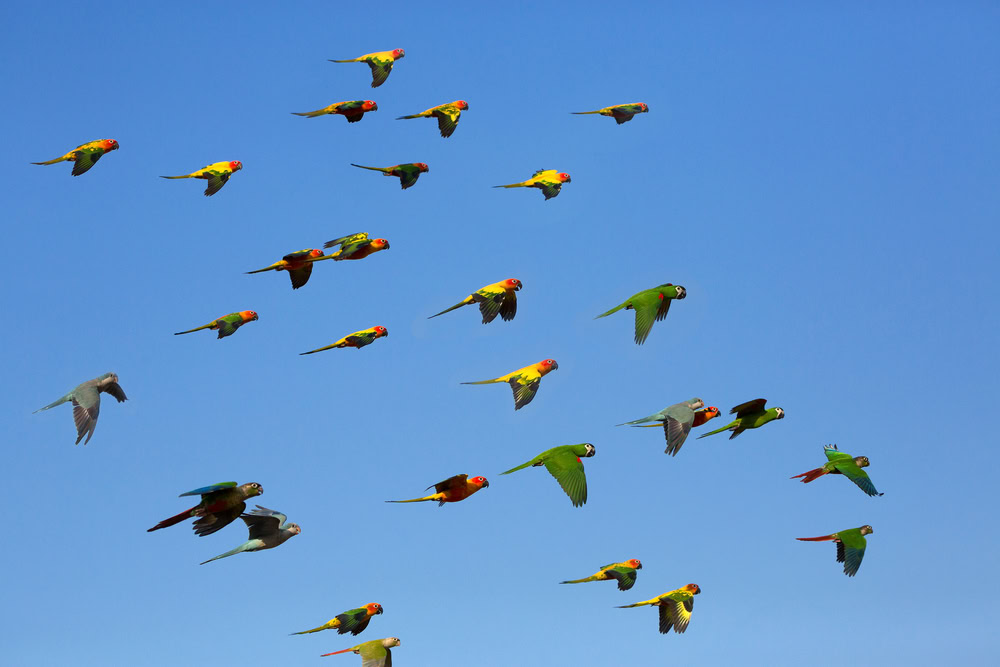
(Most) Bird Species Are Wary of Humans
Most avian species will naturally give humans a wide berth; we are, at best, lumbering and loud, at worst, a dangerous threat. There are some species, particularly larger parrots, that are more comfortable, even curious, around us, but the vast majority of birds would prefer to keep their distance.
(Many) Birds Live and Fly in Large Groups
If you’ve ever seen a flock of finches or a murmuration of starlings, you’ll know how birds can fly in incredible formations. Most of us have witnessed a playful dog setting off an airborne stampede of pigeons in a park or seagulls on the beach. Birds find safety in numbers, relying on unspoken communication to coordinate their movements. As pets, birds are rarely kept in large groups, and those that are would most likely flee in formation to the nearest tree if given half a chance.
Birds Without Borders
When we understand the nature of birds, it’s pretty clear they aren’t suited to a life spent in captivity, as we can never provide them with the space they need to thrive and spread their wings. That said, some bird species that can and will live quite contentedly as pets, and they can even be trained to stay loyal to their home and humans. For the species that will not easily be taught to live without a cage and not fly away, we ought to be questioning if it is fair to keep them as pets at all.
Bird Species That Can Be Trained To Live Without A Cage
Below are some examples of commonly kept bird species suitable for cage-free living, and those that would not. Essentially, most large parrots and parrakeets would do well with this sort of lifestyle, whereas smaller birds will be harder to contain and keep safe. Those in the ‘not’ group tend to be smaller, flocking, nervous birds that, in nature, would prefer to live in larger groups in the shelter of thick vegetation, where they would quickly fly away from humans rather than approach them.
- Macaws
- Cockatoos
- Cockatiels
- African Gray
- Budgerigars*
- Lovebirds*
- Finches
- Canaries
- Doves
*suitable for indoor cage-free only

How Can You Train A Bird To Live Without A Cage?
In the ideal scenario, you would start with a young bird, but just as you can teach an old dog new tricks, you can certainly train an older bird to go cage-free without flying away. One important part of this process is that you do still need a cage. This is where they will sleep at night or be kept if you need to contain them for any reason.
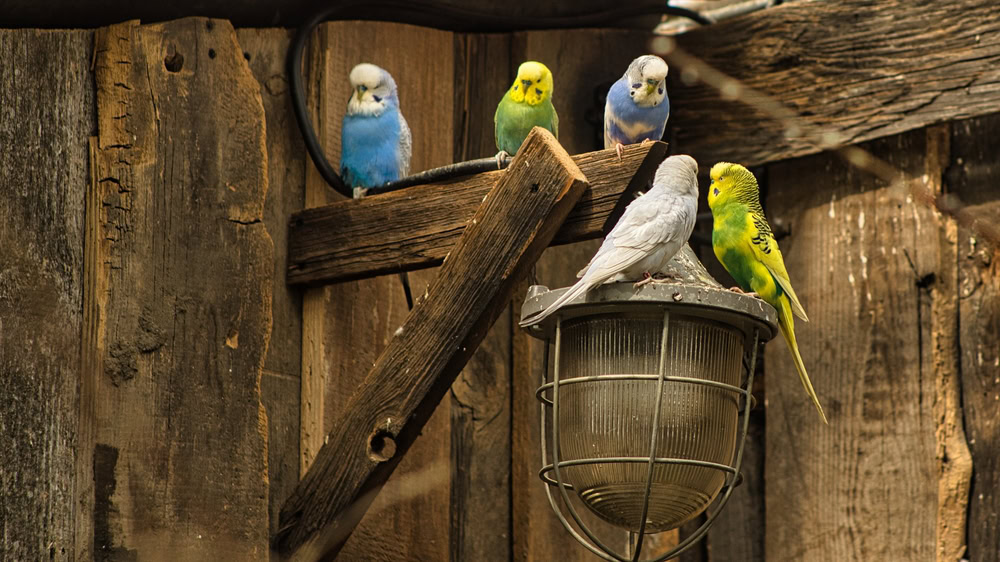
Choose The Right Cage
People often make the mistake of buying a cage that is taller than it is wide. Birds fly horizontally, not vertically, so a cage must be at least as wide as it is tall. Once you have progressed to allowing your bird outside most of the time, you may be able to switch to a smaller cage for their use at night, but until that time, they need a cage that allows them to fly properly, without hitting their feathers on the bars. Based on this, you can see that life in a cage is completely unsuitable for large parrots unless you can provide them with a large flight aviary. The right size for your bird will depend on their breed and how many birds are being housed together, so be sure to do your research.

The 6 Things to Keep in Mind When Going Cage-Free
1. Identification
Pet birds often come with an identification leg ring, and it is possible to have a microchip implanted into the breast muscle of larger birds. Speak to your vet (preferably one that specializes in avian medicine) about how to ensure your bird’s identification is appropriate and current.
2. Bonding
This is the fun part. You need to invest A LOT of time into bonding with your pet. Feeding treats, spending time together, and creating a positive relationship is going to be the key to success here. Your bird should want to spend time with you, and to see their cage and your home as a safe and happy place to be. Set up a perch area outside their cage where you provide treats daily.
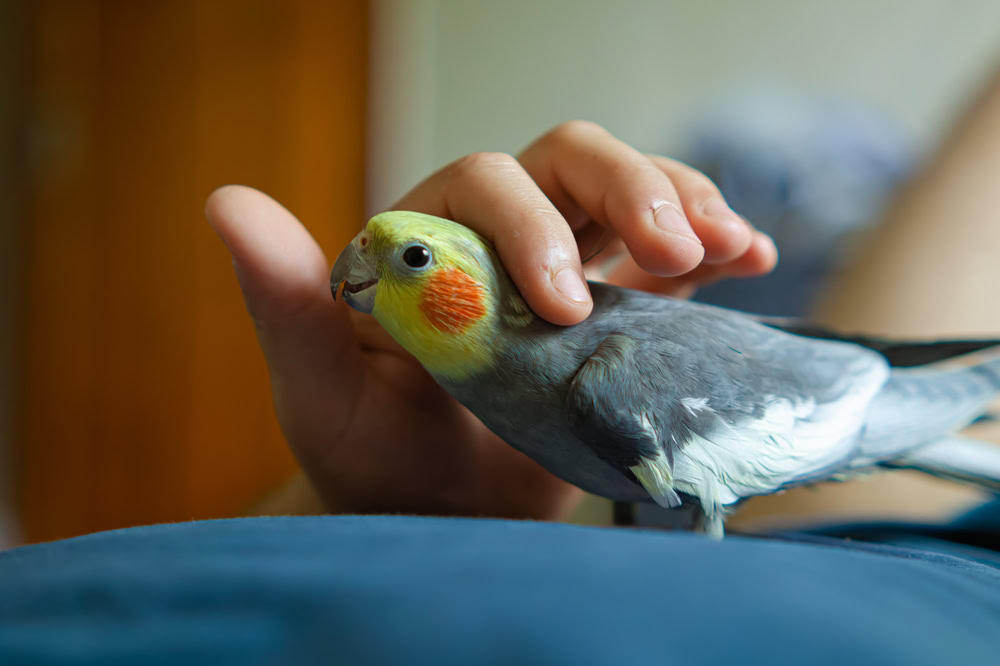
3. Check for hazards
Fans, open doorways and windows, other pets, hot stoves, and careless family members need to be dealt with before allowing your bird to explore your home. Make sure there aren’t any places where your bird could become trapped or stuck, like behind bookcases. You need to address these hazards each and every time you let your bird out of their cage, and make sure everyone in the house knows that the bird is free.
4. Contained free flight
Start small, in a room that can be closed off. To begin, offer them a treat at their perch. Next, take them away from their cage and perch, then call them back, rewarding them with a treat. Do this 3-4 times in a row, then allow them to explore for a little while.
Call them back to their perch and return them to their cage.
Repeat daily until you are happy that they know the routine.
5. Increase their area
Little by little, increase their range within the home, bringing or calling them back to their perch and cage at the end. You can set up a separate treat perch elsewhere in the home as well. Try to only give treats at the perch to encourage them to return here when called. This will also limit the distribution of mess in the home.
6. Assess the risk of outdoor free flight
Allowing your bird to enjoy real free flight is possible, but should only be attempted after a lengthy period of contained flight in the home. It will not be suitable for all birds and is not without risk. For example:
- predators
- disease
- flying away/getting lost
- accidents/trauma eg. collision with a car
If you would like to allow your bird outside, do so before you feed them. This way, the allure of food should bring them back to you. Do not just open the door and let them go free; if your bird is outside, you should be too. Call them back for their meal when you are ready to head back indoors.
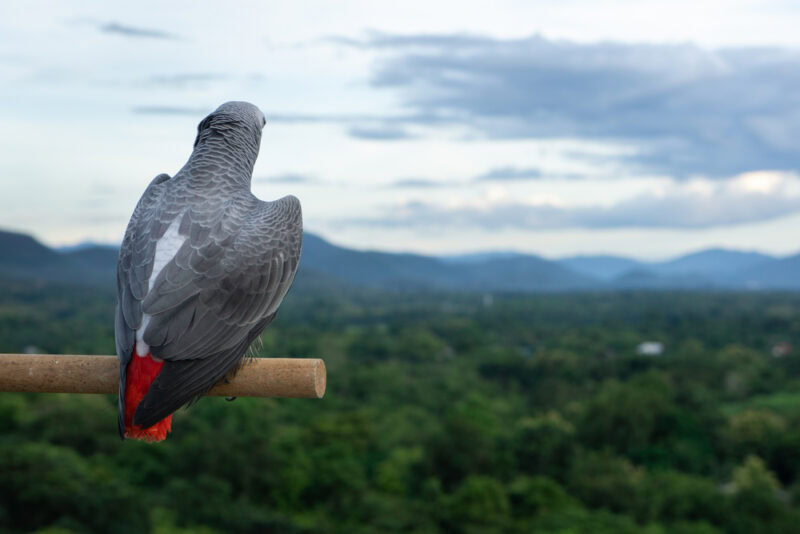

The Benefits of Living Without A Cage
The benefits of allowing your pet bird to live without a cage are obvious. You are providing your bird with a safe home, whilst allowing them to engage in their natural behaviors. Not only that, but if your bird flies outside, you can feel confident that your pet is happy in their home whenever they fly back to you – how special is that?
The Problems, Pitfalls, & Risks of Living Without A Cage
As mentioned above, birds living free of the confines of a cage are going to be much happier than their incarcerated counterparts, but they are at greater risk for injury, escape, disease, and death. The reality is that by allowing your bird to fly free, there will always be a chance that they may not come back.
For you as a pet owner, always be mindful of everyday items and activities in the home that could frighten, injure, trap, or even kill your bird, which can get a bit stressful! Additionally, you do need to contend with potential parrot poops around the house, but encouraging your bird to spend time on their perch will reduce this significantly.

Alternatives To Keeping Birds In Cages
If you don’t think that keeping a cage-free pet bird is the right option for you, there are a few alternatives that will allow you to enjoy these magnificent creatures without confining them to life in a cramped cage.
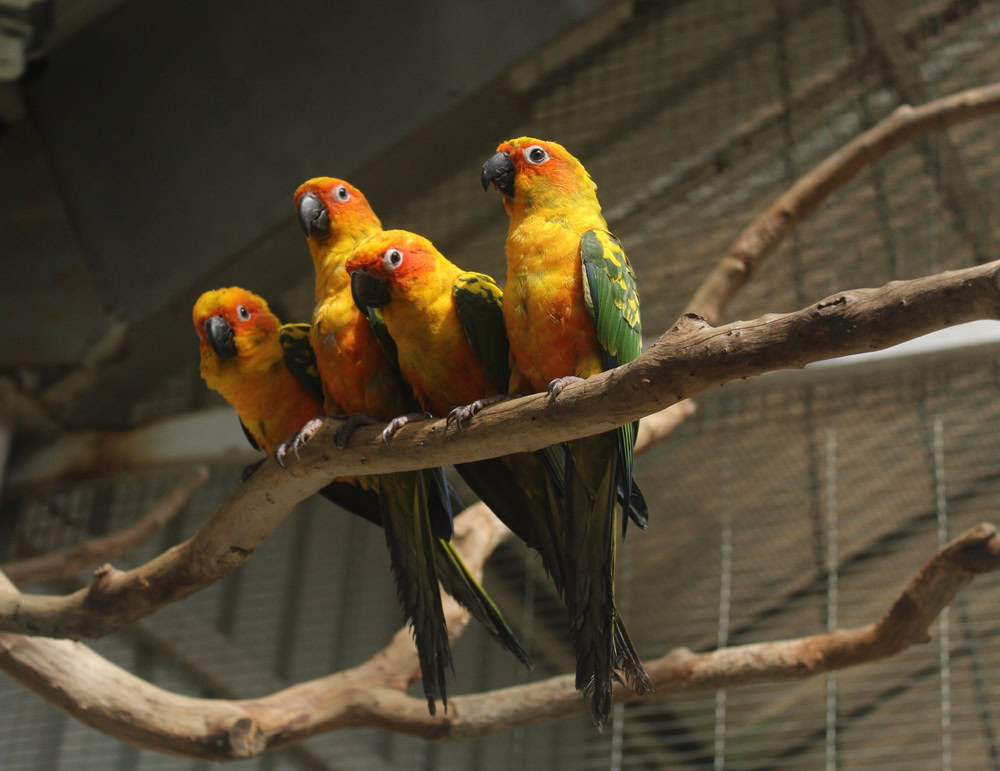
Large aviaries
If you have the space and the means, building or buying a large flight aviary can allow you to keep several compatible bird species together in a safe enclosure. While this does still keep them confined, a large aviary trumps a cage.
Bird attracting plants
Whether you have a large yard or a small patio, planting plants that attract birds is a great way to encourage wild birds to your home.
Bird feeders
Using bird feeders can allow you to attract a range of different species to your home by providing different seeds, fruits, and vegetables. Be sure to safeguard them from opportunistic scavengers and predators, and give the feeder and surrounding area a good clean periodically to reduce the risk of spreading disease.
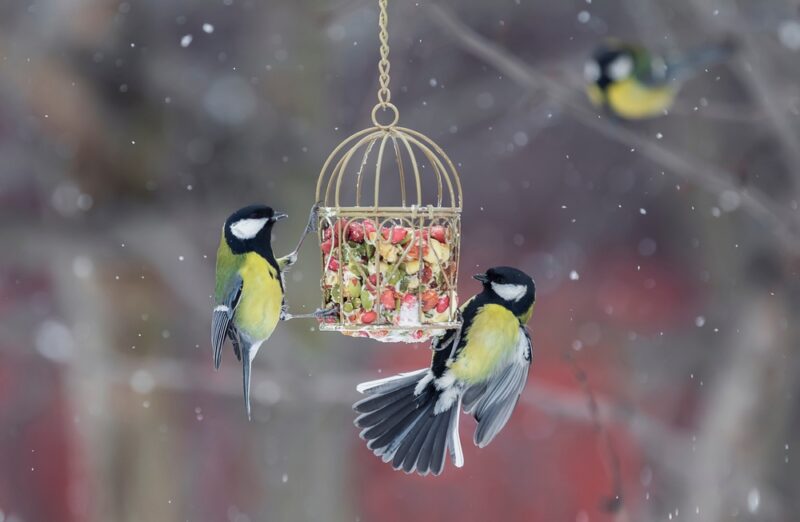

Frequently Asked Questions (FAQ)
Can I use a leg chain to stop my bird from flying away?
We strongly advise against using leg chains as they pose a significant risk of injury, particularly broken limbs.
What about clipping my bird’s wings?
Clipping wings is a method by which the flight feathers are trimmed on both sides to prevent your bird from being able to fly properly, just allowing them to flutter safely to the floor. Some view this method as a safe way to allow birds to enjoy time outside the cage without the risks of them flying into dangerous situations or escaping. However, clipping the flight feathers carries the risk of permanent damage to the growth of the feathers, as well as the potential for trauma to the wing if the wing clipping is done incorrectly, or if the bird moves suddenly.
The aim of keeping a bird outside their cage is to allow them to engage in natural behaviors, and wing clipping prevents this. It can also cause stress to your bird when they find themselves unable to fly. Therefore, it is not something we recommend unless there are specific circumstances that necessitate it.

Final Thoughts
A cage can provide our pet birds with safety and security, but it can also rob them of their ability to engage in natural behaviors, most particularly, flight. Many bird lovers want to allow their beloved pets to explore their world, free from the restrictions of a cage, but it is not as simple as just opening the door.
Some bird species will be happy to fly free of their confines, thought they won’t be so happy to return, but most parrot species can be trained to fly free of their cages and come back when called. By encouraging our birds to see their cage as a safe place, we can gradually increase the size of our bird’s world, even allowing them to fly completely free outdoors.
It is important to be aware that life without a cage does have its risks, but for many, those risks are preferable to limiting their pets to a life lived inside one.
- https://www.discoverwildlife.com/animal-facts/birds/flightless-birds
- https://www.rspca.org.uk/adviceandwelfare/pets/birds/flying
- https://abcbirds.org/blog/native-trees-shrubs-attract-birds
- https://vcahospitals.com/know-your-pet/leg-bands-and-identification
- https://kb.rspca.org.au/knowledge-base/what-kind-of-enclosure-does-my-bird-need/
- https://www.youtube.com/watch?v=V4f_1_r80RY
Featured Image Credit: Karel Bartik, Shutterstock
